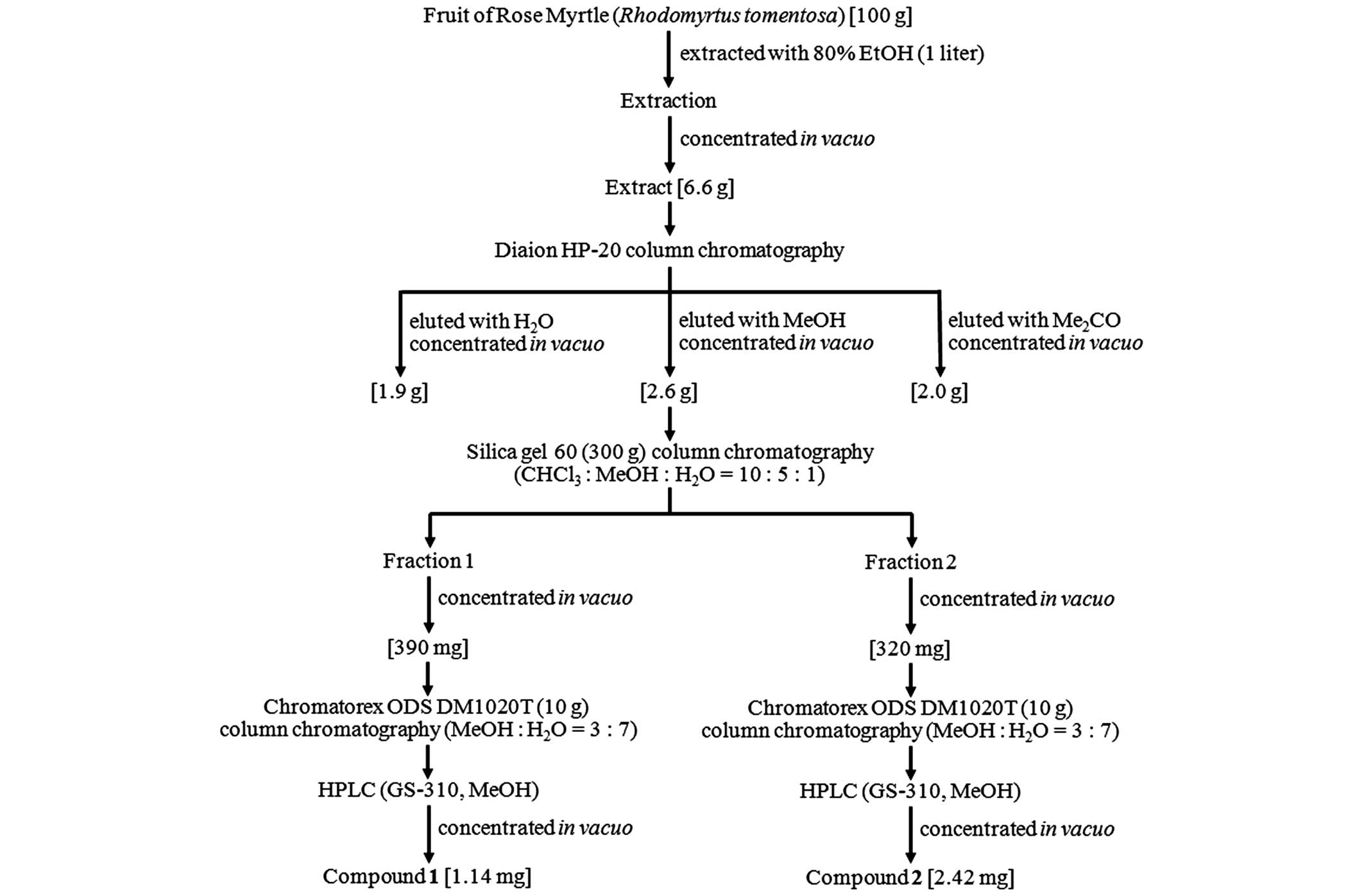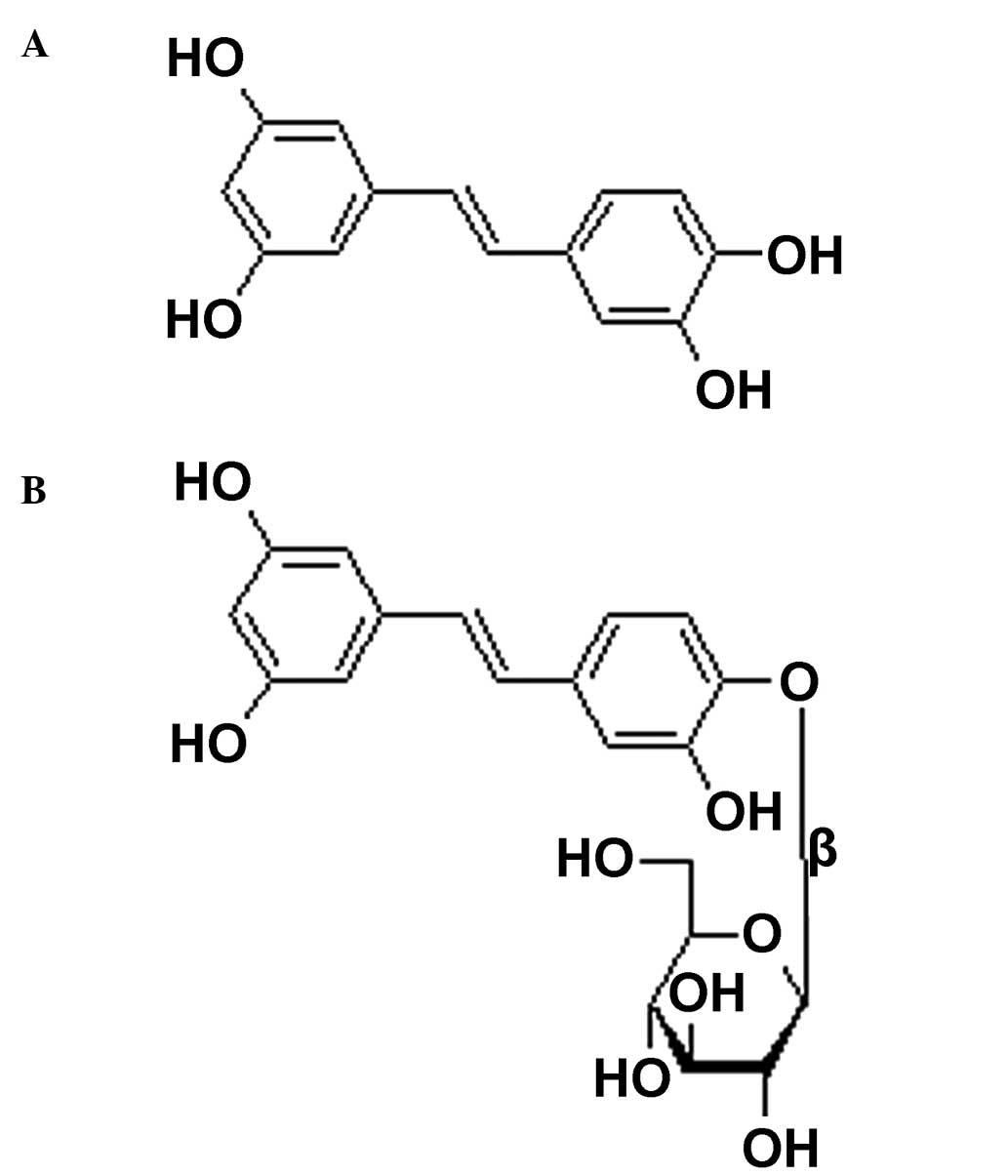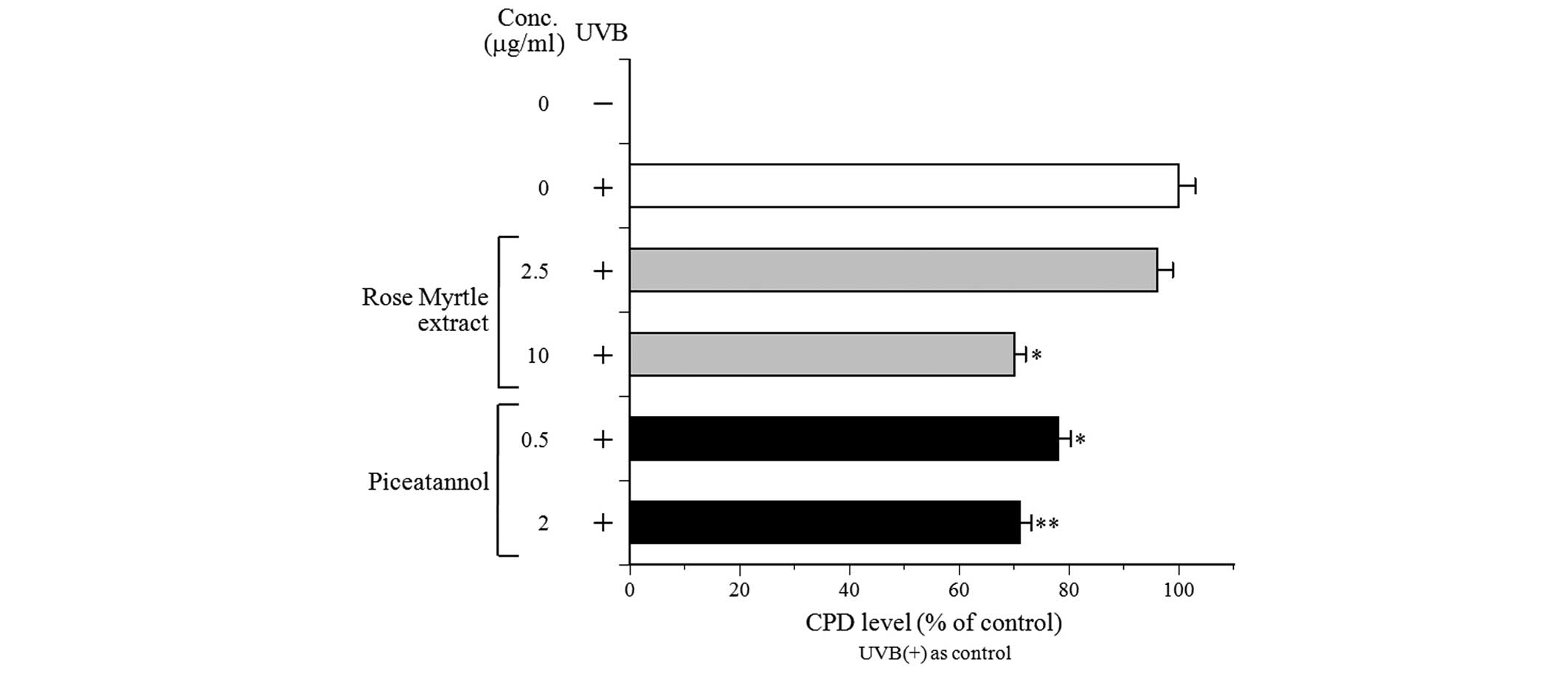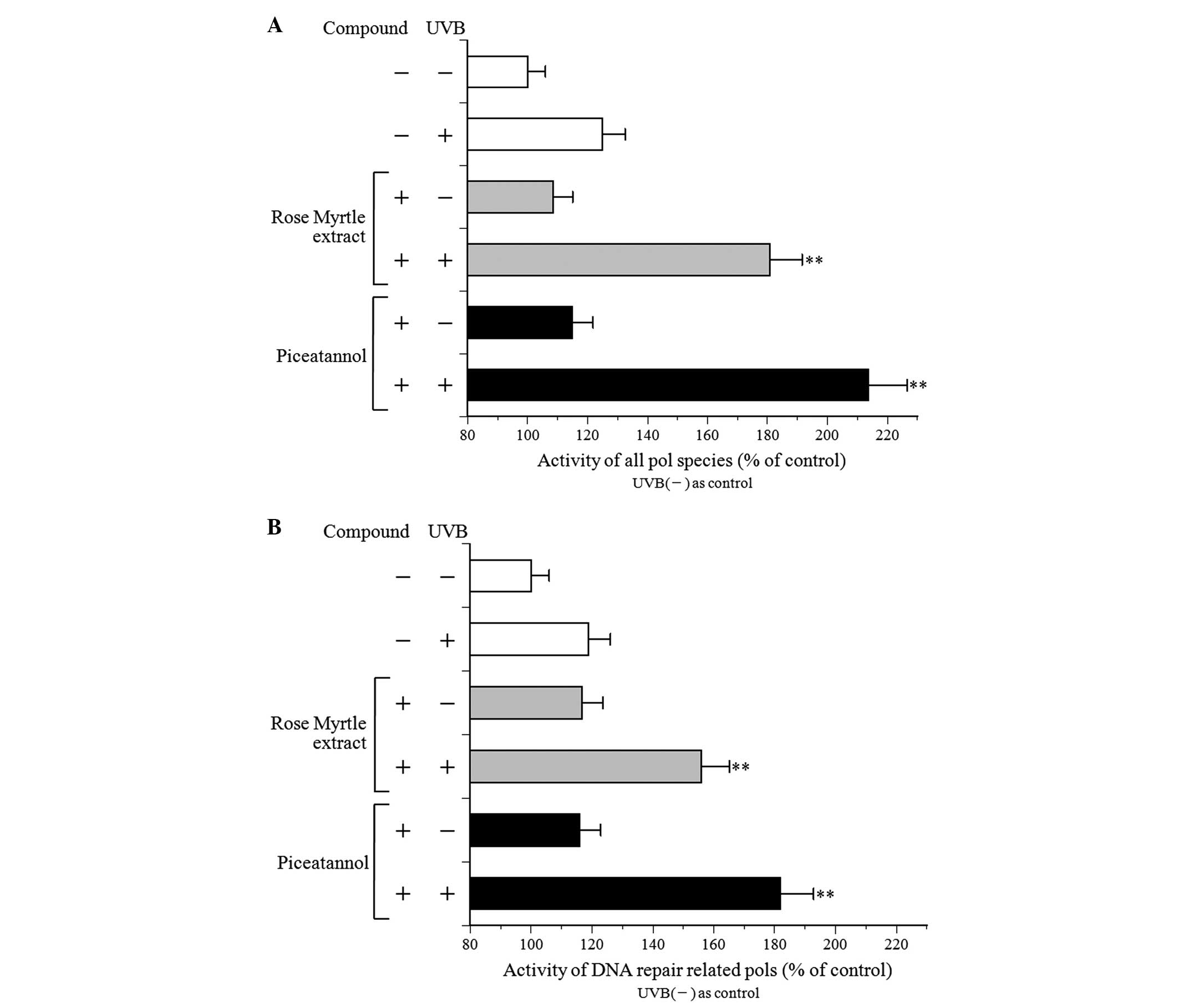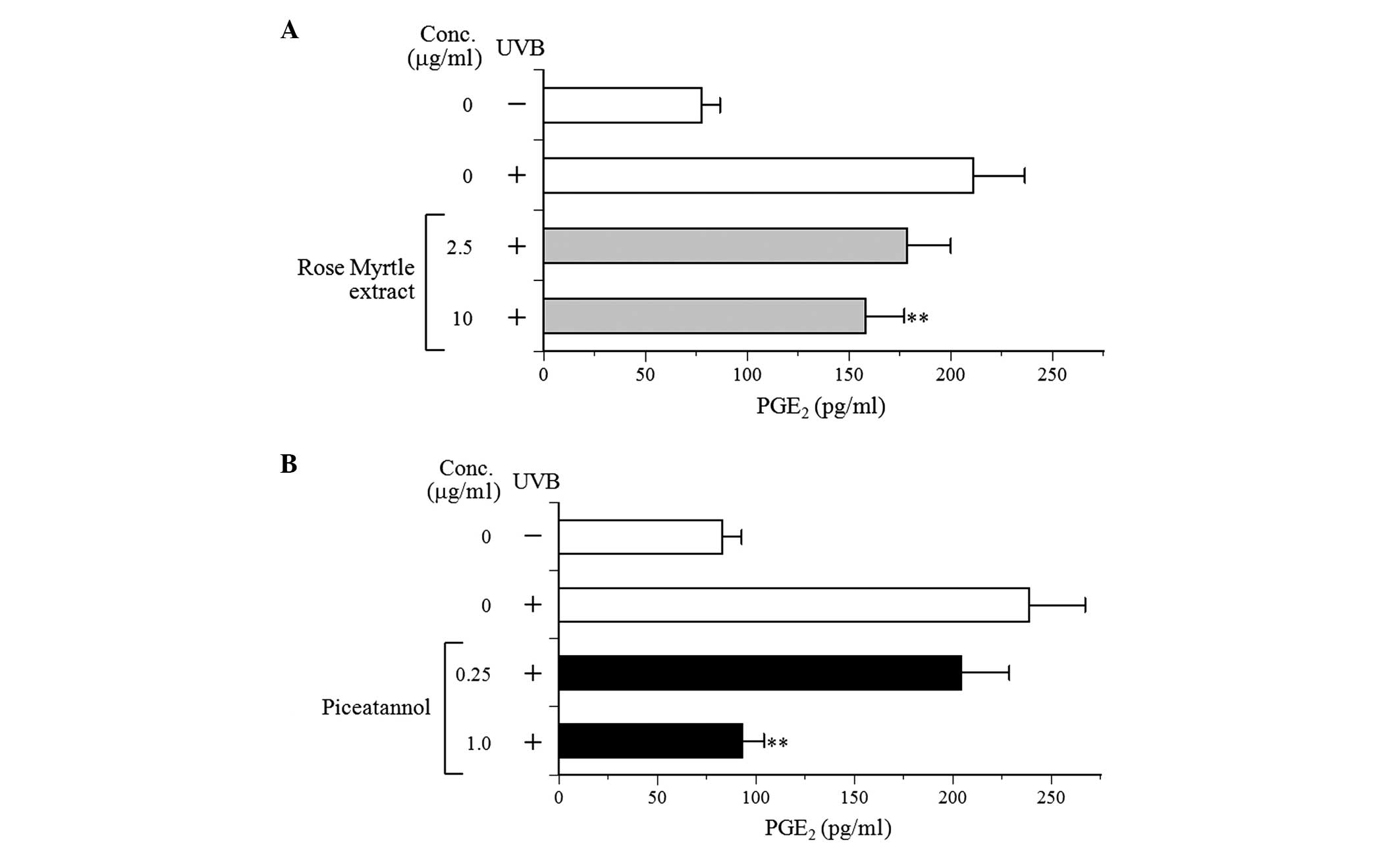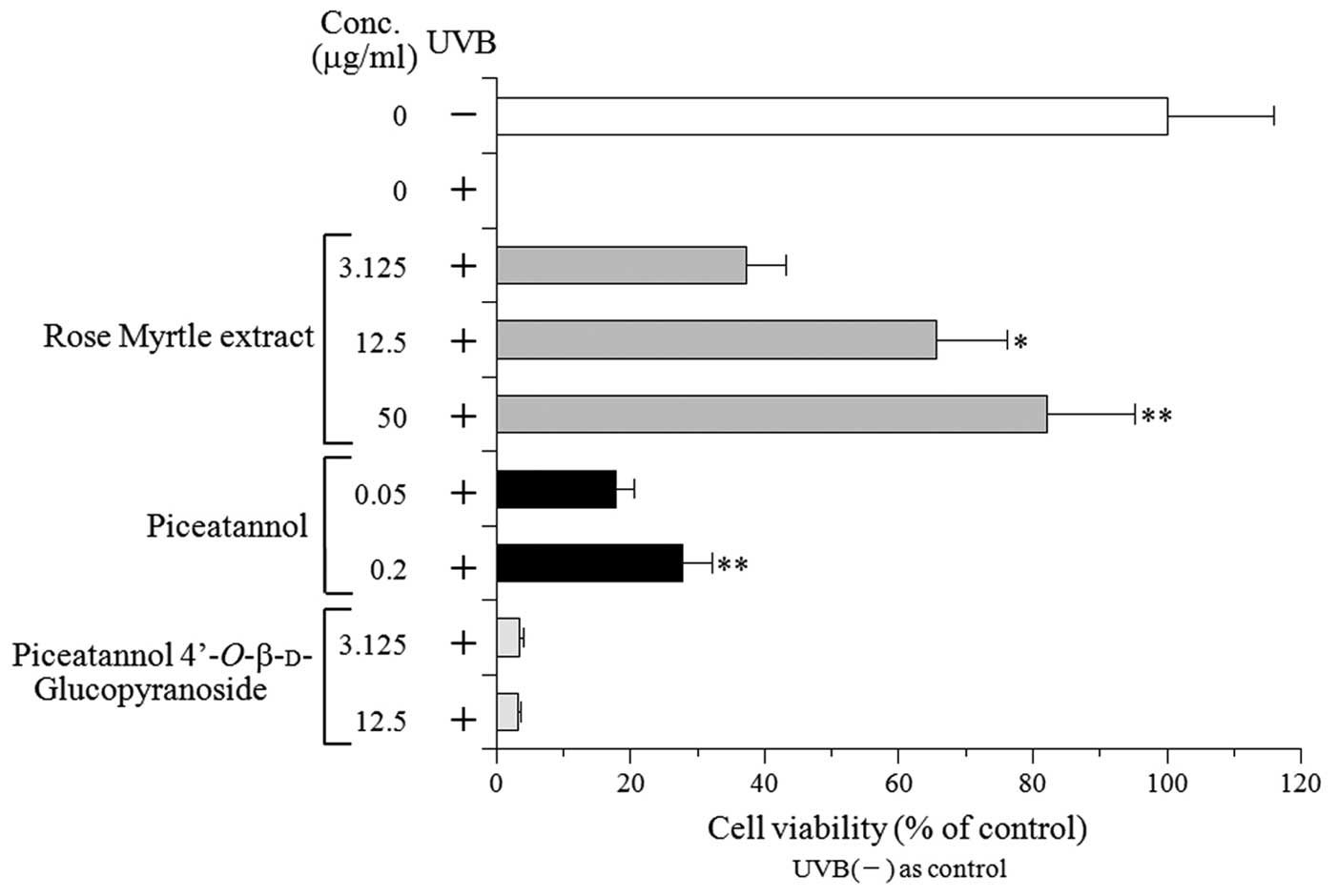|
1
|
Berneburg M, Plettenberg H and Krutmann J:
Photoaging of human skin. Photodermatol Photoimmunol Photomed.
16:239–244. 2000. View Article : Google Scholar : PubMed/NCBI
|
|
2
|
Verschooten L, Claerhout S, Van Laethem A,
Agostinis P and Garmyn M: New strategies of photoprotection.
Photochem Photobiol. 82:1016–1023. 2006. View Article : Google Scholar : PubMed/NCBI
|
|
3
|
Moriwaki S and Takahashi Y: Photoaging and
DNA repair. J Dermatol Sci. 50:169–176. 2008. View Article : Google Scholar
|
|
4
|
Kripke ML, Cox PA, Alas LG and Yarosh DB:
Pyrimidine dimers in DNA initiate systemic immunosuppression in
UV-irradiated mice. Proc Natl Acad Sci USA. 89:7516–7520. 1992.
View Article : Google Scholar : PubMed/NCBI
|
|
5
|
Autier P: Sunscreen abuse for intentional
sun exposure. Br J Dermatol. 161(Suppl 3): 40–45. 2009. View Article : Google Scholar : PubMed/NCBI
|
|
6
|
Schroeder P and Krutmann J: What is needed
for a sunscreen to provide complete protection. Skin Therapy Lett.
15:4–5. 2010.PubMed/NCBI
|
|
7
|
Matsui MS, Hsia A, Miller JD, Hanneman K,
Scull H, Cooper KD and Baron E: Non-sunscreen photoprotection:
Antioxidants add value to a sunscreen. J Investig Dermatol Symp
Proc. 14:56–59. 2009. View Article : Google Scholar : PubMed/NCBI
|
|
8
|
Yaar M and Gilchrest BA: Photoageing:
Mechanism, prevention and therapy. Br J Dermatol. 157:874–887.
2007. View Article : Google Scholar : PubMed/NCBI
|
|
9
|
Nichols JA and Katiyar SK: Skin
photoprotection by natural polyphenols: Anti-inflammatory,
antioxidant and DNA repair mechanisms. Arch Dermatol Res.
302:71–83. 2010. View Article : Google Scholar
|
|
10
|
Do TL: SIM. Medicine plants and remedies
of Vietnam. 16th edition. Thoi Dai Publication House; Hanoi,
Vietnam: pp. 434–435. 2011
|
|
11
|
Mosmann T: Rapid colorimetric assay for
cellular growth and survival: Application to proliferation and
cytotoxicity assays. J Immunol Methods. 65:55–63. 1983. View Article : Google Scholar : PubMed/NCBI
|
|
12
|
Mizushina Y, Yagi H, Tanaka N, Kurosawa T,
Seto H, Katsumi K, Onoue M, Ishida H, Iseki A, Nara T, et al:
Screening of inhibitor of eukaryotic DNA polymerases produced by
microorganisms. J Antibiot (Tokyo). 49:491–492. 1996. View Article : Google Scholar
|
|
13
|
Mizushina Y, Yoshida S, Matsukage A and
Sakaguchi K: The inhibitory action of fatty acids on DNA polymerase
β. Biochim Biophys Acta. 1336:509–521. 1997. View Article : Google Scholar : PubMed/NCBI
|
|
14
|
Lindell TJ, Weinberg F, Morris PW, Roeder
RG and Rutter WJ: Specific inhibition of nuclear RNA polymerase II
by α-amanitin. Science. 170:447–449. 1970. View Article : Google Scholar : PubMed/NCBI
|
|
15
|
Kashiwada Y, Nonaka G, Nishioka I,
Nishizawa M and Yamagishi T: Studies on rhubarb (Rhei rhizoma). XIV
Stilbene glucosides. Chem Pharm Bull. 36:1545–1549. 1988.
View Article : Google Scholar
|
|
16
|
Marrot L and Meunier JR: Skin DNA
photodamage and its biological consequences. J Am Acad Dermatol.
(Suppl 2)58:S139–S148. 2008. View Article : Google Scholar : PubMed/NCBI
|
|
17
|
Loeb LA and Monnat RJ Jr: DNA polymerases
and human disease. Nat Rev Genet. 9:594–604. 2008. View Article : Google Scholar : PubMed/NCBI
|
|
18
|
Lange SS, Takata K and Wood RD: DNA
polymerases and cancer. Nat Rev Cancer. 11:96–110. 2011. View Article : Google Scholar : PubMed/NCBI
|
|
19
|
Kornberg A and Baker TA: Eukaryotic DNA
replication. DNA replication. 2nd edition. Freeman WD; Co.:
University Science Books; California, Chapter: Chapter 6; pp.
197–225. 1990
|
|
20
|
Gailani MR, Leffell DJ, Ziegler A, Gross
EG, Brash DE and Bale AE: Relationship between sunlight exposure
and a key genetic alteration in basal cell carcinoma. J Natl Cancer
Inst. 88:349–354. 1996. View Article : Google Scholar : PubMed/NCBI
|
|
21
|
Pagès V and Fuchs RP: How DNA lesions are
turned into mutations within cells? Oncogene. 21:8957–8966. 2002.
View Article : Google Scholar : PubMed/NCBI
|
|
22
|
Bebenek K and Kunkel TA: DNA Repair and
Replication. Advances in Protein Chemistry. Yang W: Elsevier; San
Diego, CA: pp. 137–165. 2004, View Article : Google Scholar
|
|
23
|
Hübscher U, Maga G and Spadari S:
Eukaryotic DNA polymerases. Annu Rev Biochem. 71:133–163. 2002.
View Article : Google Scholar
|
|
24
|
Johnson RE, Washington MT, Prakash S and
Prakash L: Fidelity of human DNA polymerase eta. J Biol Chem.
275:7447–7450. 2000. View Article : Google Scholar : PubMed/NCBI
|
|
25
|
Servant L, Cazaux C, Bieth A, Iwai S,
Hanaoka F and Hoffmann JS: A role for DNA polymerase β in mutagenic
UV lesion bypass. J Biol Chem. 277:50046–50053. 2002. View Article : Google Scholar : PubMed/NCBI
|
|
26
|
Kabashima K, Nagamachi M, Honda T,
Nishigori C, Miyachi Y, Tokura Y and Narumiya S: Prostaglandin
E2 is required for ultraviolet B-induced skin
inflammation via EP2 and EP4 receptors. Lab Invest. 87:49–55. 2007.
View Article : Google Scholar
|
|
27
|
Trompezinski S, Pernet I, Schmitt D and
Viac J: UV radiation and prostaglandin E2 up-regulate
vascular endothelial growth factor (VEGF) in cultured human
fibroblasts. Inflamm Res. 50:422–427. 2001. View Article : Google Scholar : PubMed/NCBI
|
|
28
|
Rundhaug JE, Mikulec C, Pavone A and
Fischer SM: A role for cyclooxygenase-2 in ultraviolet
light-induced skin carcinogenesis. Mol Carcinog. 46:692–698. 2007.
View Article : Google Scholar : PubMed/NCBI
|















